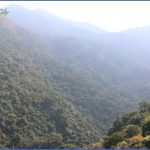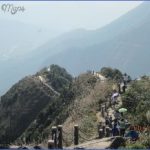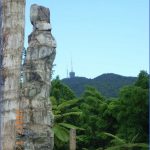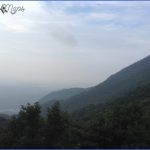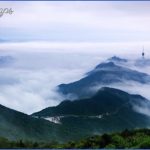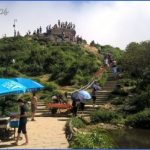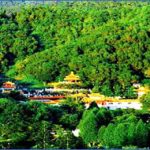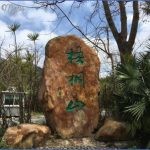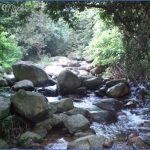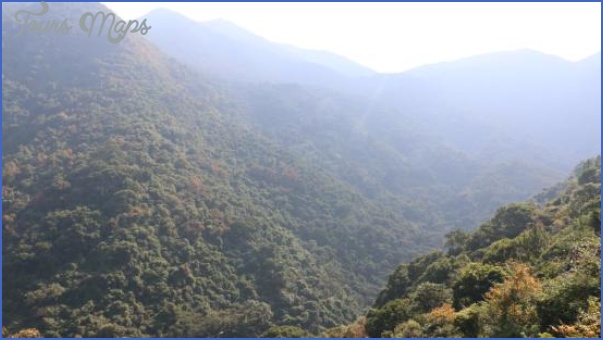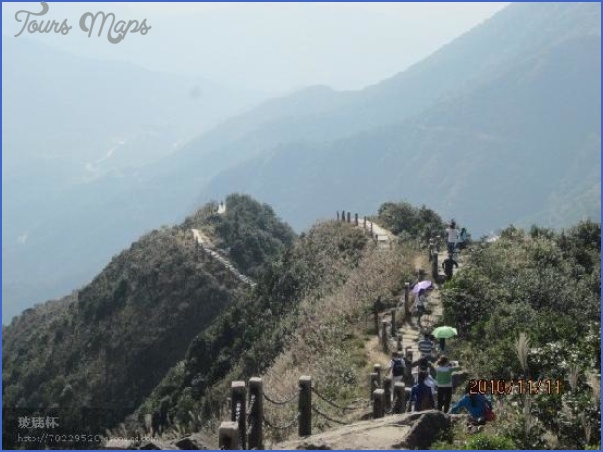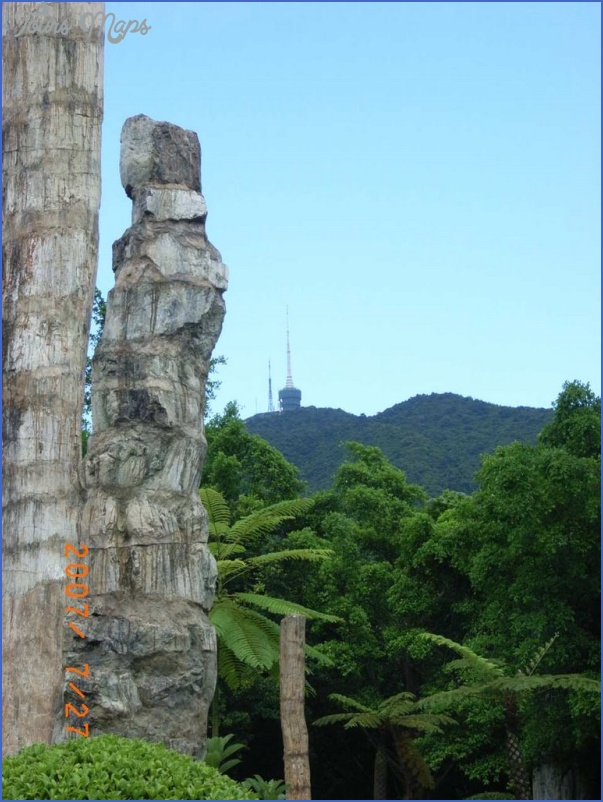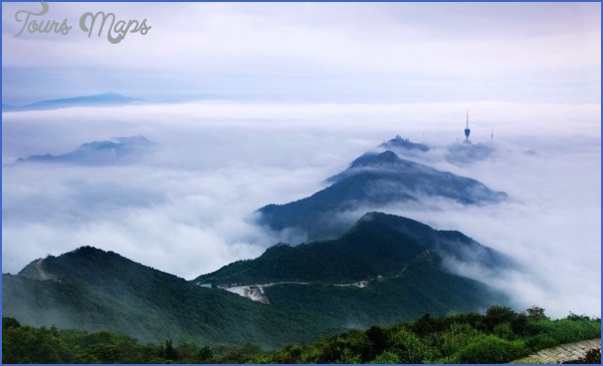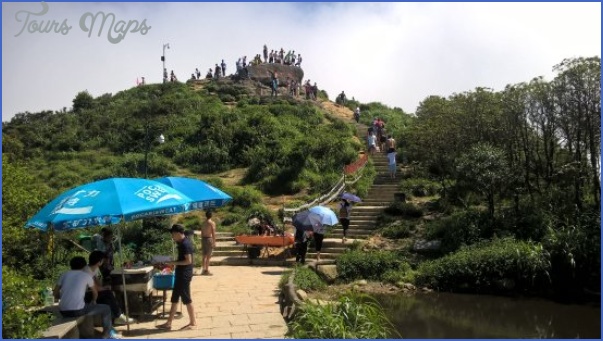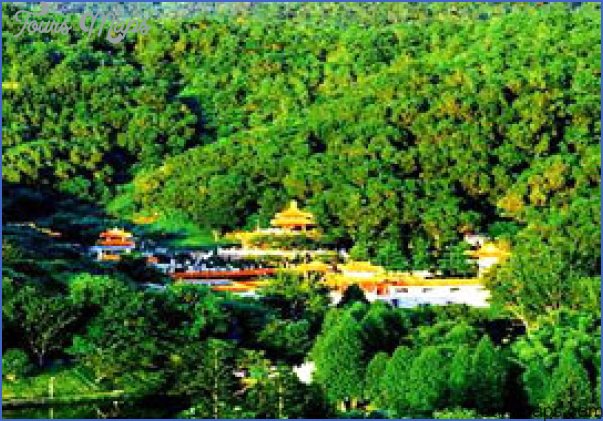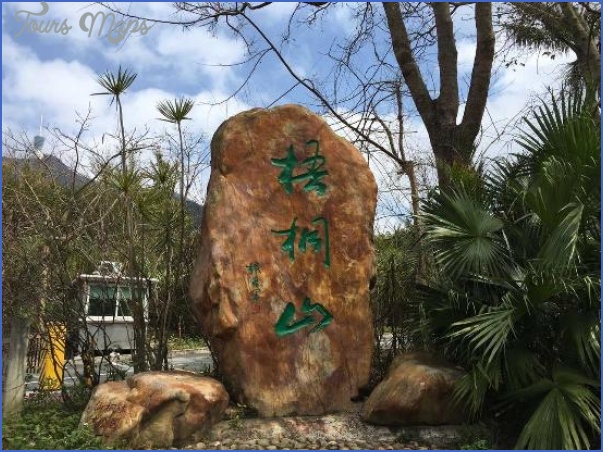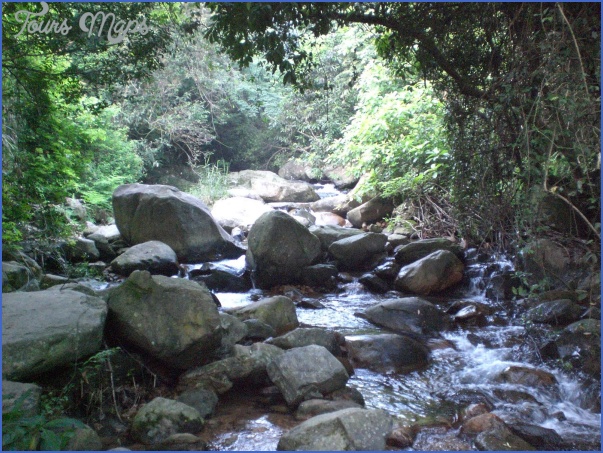Wutong Mountain broods at great height over Shenzhen. At 984 metres 3050 ft. it is the tallest mountain in the city, and, after Tai Mo Mountain in Hong Kong, the second tallest in the whole Pearl River Delta. And it’s not one of those remote mountains that just happen to be within the city boundaries either. It’s partly within central Luohu District, less than five miles from the railway station and you can see it and its enormous TV tower from everywhere.
Three of the city’s best parks are on Wutong Mountain. They are the East Lake Dong Hu Park, the Lake of the Immortals Xian Hu Park and Wutong Mountain Park. Wutong Mountain is a declared National Forest Park. And in China, National Forest Park means serious hiking.
Tourism on Wutong Mountain isn’t new. For the past five hundred years, the Xin’an or Bao’an County Chronicle, the historical record of the county of which Shenzhen has traditionally been a part, has published the list of the Eight Great Views of Xin’an County. One of those views was the Heavenly Pool on Wutong Mountain, that is to say the source of the Shenzhen River. Wutong Mountain even had its own poet. The Qing Dynasty poet Qiao Shunyong wrote:
Wutong Mountain leaning against Heaven
Autumn frosts, winter snows
Mists like incense rising after rain
In the folds of the mountain
Men struggling for mastery over twining creepers
Wispy herbs among green glades of bamboo
There are several peaks within the park but only two need concern us. These are Xiao or Lesser Wutong Mountain and Da or Greater Wutong Mountain. Lesser Wutong Mountain 664 metres, 2060 ft. is the peak that can be seen from the city proper. It’s where, from anywhere in the city, you can see Shenzhen TV’s enormous Communications tower. The real height is Greater Wutong Mountain and if you’re any sort of a wuss this isn’t for you. To get to it you have to scale the Hao Han slope. Hao Han in Chinese means something along the lines of a real man. Need we say more?
Getting to the top of Lesser Wutong or the bottom of the Hao Han Slope is a modest goal. Greater Wutong will test you. Check with your cardiologist first.
There are five paths to the top.
They are:
1. From Wutong Mountain Village to Lesser Wutong Mountain, about 5 km
2. From Wu Miao Di to Lesser Wutong Mountain, about 7 km
3. From Yantian Wutong Mountain Management Office to the Greater Wutong Mountain, about 5 km
4. From Shatoujiao to Greater Wutong Mountain, about 8.5 km
5. From Tai Shan Dong to Greater Wutong Mountain, about 7.5 km.
These divide into hard and easy. The hard ones involve trekking on narrow paths through thick bush, with rewards commensurate to the difficulty. The easy one, which we recommend, involves walking along a good wide paved road, admittedly in the company of the five thousand who have chosen to do it with you today.
We have always been suspicious of our abilities as mountaineers and the idea of serious climbing in 340 heat and 80% humidity we find risible. So our first attempt to plant the flag at the top took place on a very cold day in December.
We started out at Wutong Mountain Village. In some ways this is a typical urban village in Shenzhen characterised by squat eight storey buildings on the plan of the original village. But it maintains something of its original flavour. To start with fields and farms surround it. It’s also still noticeably Hakka. Most urban villages have gone the way of all flesh in Shenzhen, filled with immigrants and Mandarin speakers. In Wutong Mountain Village, Hakka still predominates as the language of daily communication. It’s a pleasant and prosperous village with a number of good Hakka restaurants.
After a short walk to the park gate, we got to the serious business. The road disappeared into the forest and began to climb. Soon, despite the cold, we were panting and even sweating. Don’t be discouraged by this. On the way down after we got to the peak, we concluded that the early slopes are by far the steepest with the very notable exception of the Hao Han Slope.
We climbed slowly but steadily through mature stands of timber. Every now and then the greenery gave way to magnificent vistas over mountain villages.
Even though it was a weekday, the crowd was not small. We were surrounded by groups of climbers, boys and girls in their late teens and early twenties. The cool period had arrived early that year and everybody was rugged up. The jackets worn by the girls all seemed to come from Dolce and Gabbana and the boys were equipped by North Slope. One girl had Nil inscribed on her bottom in Korean and another wore a jacket announcing that there was Joy in Feedom. Yet another rather innocent looking girl wore a jacket, which announced in English that Sticks and stones may break my bones but whips and chains excite me. Did she know what her shirt said? Everybody was well equipped for a day on the mountain, provisions being packed in bags that vacillated between Prada and plastic yellow bags with Tweety Pie on them.
Tourism in China is a two way street. We walked along observing the natives. The natives walked along very publicly observing us and making various comments about us. At first we thought that this was because they had never seen a foreigner before. But on further enquiry it turned out that their curiosity had been aroused because they had never seen
anybody as old as us before. Ah, Shenzhen! Soon the first girl came up asking to have her photo taken with us. This rapidly turned into a flood and by the time we had got three quarters of the way up the mountain we had had our photos taken with several hundred people.
The pavilions, which had previously seemed so far above us gradually started to look not so far and it started to dawn on us that we might actually succeed here. But with photo time out we were already nearly two hours into the journey and the thought of going back down was not attractive. Then a miracle happened.
The road is closed to all but official traffic but cars do occasionally pass. A car drew up, stopped, and asked us if we wanted a ride to the top. Hey! We’ve been around! We asked how much? You look like you need it, he replied and we hesitated no longer.
Mr Shen, the driver, was a potential contractor to the Park Administration. It turned out that the TV tower whose clean lines we had been admiring for years was not yet open but was due to do so soon. There would be restaurants, viewing terraces and even souvenir stalls and to make this a paying proposition, some form of public transportation would be needed.
Mr Shen had come to Shenzhen a decade or so ago from one of the poorer parts of Anhui Province to work in construction. He had prospered. Starting from nothing he now owned thirty buses and his plan was to contract nine mini buses to the Park Administration to carry trade to the restaurants at the peak of Lesser Wutong. Now he was strengthening the crash rails along the road and generally inspecting safety. We sat back and in five minutes were whisked to the magnificent tower and stunning views over the city which opened up below it.
Then came the real test. Mr Shen drove us to the Hao Han Slope. This rose, seemingly vertically, towards the peak of Greater Wutong. It carries a lot of foot traffic so it’s very wide and fully equipped with steps. And if your cardiologist permits, we absolutely recommend you take the trouble. The views out over Mirs Bay towards the Hong Kong New Territories are some of the best you’ll see anywhere. Make sure you choose a clear day. Hearts pounding and legs aching we dragged ourselves through the throngs and there it was.
If you’re going to Lesser Wutong Mountain, you should allow a couple of hours for the ascent this includes two-way tourism and group photo ops time. Greater Wutong can take up to another two hours. Allowing time for descending that’s a full day, so be sure you take plenty of water and some food. There is a snack kiosk just before the Hao Han Slope but not much else. And when it’s up and running, you can do it the lazy way by taking Mr Shen’s mini bus.
There are plenty of secluded paths winding through almost virgin bush. But remember, follow the usual rules of safety and if it’s summer, pay particular attention to the possibility of hyperthermia, heat stroke. You read about it in other places. Here it’s a real threat and potentially very dangerous. Plenty of water and isotonic drinks applied regularly should keep you safe. But if you start to feel dizzy, a dip in water is the best first aid. Even warm water will lower your temperature and revive you.
Address: Wutong Village Luohu District
Buses: 107 to its terminus
WUTONG MOUNTAIN SHENZHEN Photo Gallery
Maybe You Like Them Too
- The Best Cities To Visit in The World
- World’s 10 Best Places To Visit
- Coolest Countries in the World to Visit
- Travel to Santorini, Greece
- Map of Barbados – Holiday in Barbados

